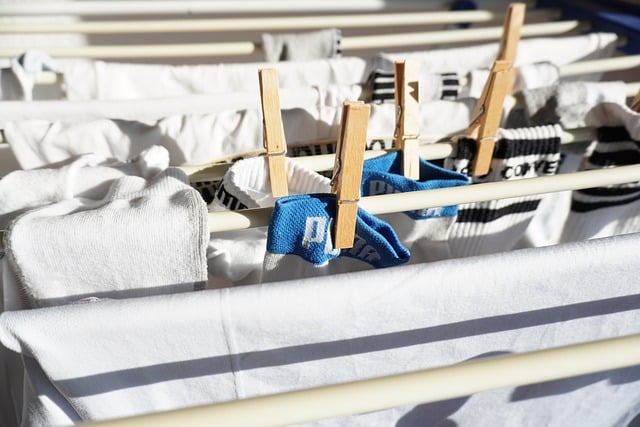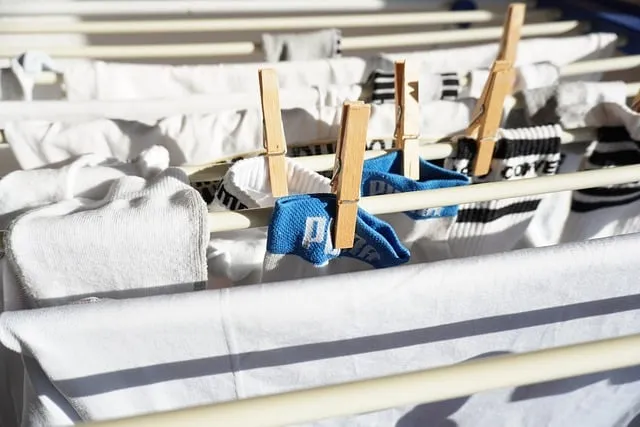How Can You Calculate Your Dryer’s Energy Efficiency Rating?
First off, you need to check the dryer’s Energy Star label. This label is like a badge of honor that shows the appliance meets certain energy efficiency standards. But let’s dive deeper into the actual calculation.
Start by finding out how much energy your dryer uses per load. Most dryers will list their energy consumption on the label or in the user manual—look for figures in kilowatt-hours (kWh). Next, multiply this number by the average number of loads you do each week. For instance, if your dryer uses 3 kWh per load and you do 5 loads a week, that’s 15 kWh.
Now, to understand how this stacks up in terms of cost, you need to know your local electricity rate. If you’re paying $0.12 per kWh, then multiply 15 kWh by $0.12 to get your weekly energy cost, which is $1.80 in this example.
But here’s where it gets interesting: comparing these figures with those of other dryers or models can really put things into perspective. More efficient dryers will use less energy per load, meaning you’ll spend less on electricity and help the planet by reducing your carbon footprint.
So, just like aiming for that carnival prize, knowing how to calculate your dryer’s energy efficiency helps you make informed choices, saving you money and boosting your green credentials.
Unlock Savings: How to Accurately Calculate Your Dryer’s Energy Efficiency Rating
First off, let’s break down what “energy efficiency rating” actually means. Think of it as your dryer’s report card on how well it performs without guzzling electricity. To figure this out, you’ll need to look at two key numbers: the dryer’s energy consumption and its capacity.
Start by checking the dryer’s energy consumption, which is usually listed in watts or kilowatts. You can find this information on the dryer’s label or in the user manual. Next, understand the capacity—this is simply how much laundry your dryer can handle in one go.
Here’s where the magic happens: take the total energy consumption and divide it by the dryer’s capacity. For example, if your dryer uses 2 kilowatt-hours (kWh) per load and can handle 5 kilograms of laundry, you’d calculate the energy efficiency by dividing 2 kWh by 5 kg. This gives you the energy used per kilogram of laundry.
But why stop there? To get an even clearer picture, compare this number to the efficiency ratings of other models. This comparison helps you see how your dryer stacks up against the competition and whether it’s time to consider an upgrade.
The Ultimate Guide to Determining Your Dryer’s Energy Efficiency: Step-by-Step
First off, check the EnergyGuide label. This handy sticker, usually found on the door frame, tells you how much energy your dryer consumes compared to similar models. Think of it as your dryer’s report card – the lower the number, the better the grade.
Next, delve into the manufacturer’s specifications. You can usually find these in the manual or online. Look for details on the dryer’s annual energy consumption. This will give you a ballpark figure of how much energy your dryer uses in a year.
Don’t forget to evaluate your dryer’s performance with your utility bill. Over time, track how much your energy bills go up with dryer use. If you notice a hefty increase, your dryer might not be as efficient as you’d like.
Now, consider the age of your dryer. Older models are often less efficient compared to modern ones. Newer dryers come with advanced technology that optimizes energy use, like moisture sensors that stop the cycle when clothes are dry, saving both time and energy.
Lastly, keep an eye out for any maintenance issues. Clean the lint filter regularly and ensure that the venting system is clear. A well-maintained dryer operates more efficiently, reducing overall energy consumption.
By following these steps, you’ll be well on your way to determining whether your dryer is a frugal friend or an energy hog.
Is Your Dryer Costing You More? Learn How to Measure Its Energy Efficiency
First, check the dryer’s energy rating. Most modern dryers come with an energy label that indicates how efficiently they use power. If yours is an older model, it might be time to compare its energy consumption with newer, more efficient models. Think of it like comparing a gas-guzzling car with a sleek, fuel-efficient hybrid.
Next, consider how often you use your dryer and for how long. A dryer that’s running constantly might be a red flag. By measuring how long it takes to dry a load, you can get a sense of its efficiency. If it takes much longer than expected, your dryer might not be doing its job properly, wasting energy in the process.
Another trick is to check for moisture in the lint filter. A clogged lint filter can make your dryer work harder, using more energy to dry your clothes. Keep it clean, and you might notice a difference in your energy usage.

Lastly, think about your dryer’s age. Older models often aren’t as efficient as their modern counterparts. If you’ve had your dryer for years, it could be time to consider an upgrade. Newer models are designed with energy efficiency in mind, potentially saving you a lot of money in the long run.
By paying attention to these factors, you’ll be better equipped to determine whether your dryer is costing you more than it should and how to address any inefficiencies.
Energy Efficiency Demystified: A Simple Way to Calculate Your Dryer’s Rating

First, you need to understand what the energy rating of a dryer really means. Think of it as a report card for how well your dryer performs its job without guzzling electricity. The higher the rating, the better your dryer is at converting energy into drying power, without wasting too much on the side.
So, how do you figure this out? It’s easier than you might think. Most dryers come with an Energy Star label or a similar certification. This label usually tells you how much energy the dryer uses compared to others. For a quick comparison, check the kWh (kilowatt-hours) listed on the label. This number is like a scorecard for your dryer’s efficiency. The lower the kWh, the more efficient your dryer is.
To put it into perspective, let’s say you’re considering two dryers. Dryer A uses 500 kWh per year, and Dryer B uses 300 kWh. Dryer B is the more efficient choice, meaning it costs you less in energy bills over time.
But that’s not all. Consider how often you use the dryer and for how long. If you’re running loads constantly, a more efficient dryer will save you more in the long run. Also, think about the dryer’s features. Models with moisture sensors or eco modes often offer better efficiency, as they adjust drying times based on the load’s moisture level.
In a nutshell, understanding your dryer’s energy rating isn’t rocket science. With a bit of label-reading and comparison, you can easily pick a dryer that’s both budget-friendly and planet-friendly.

